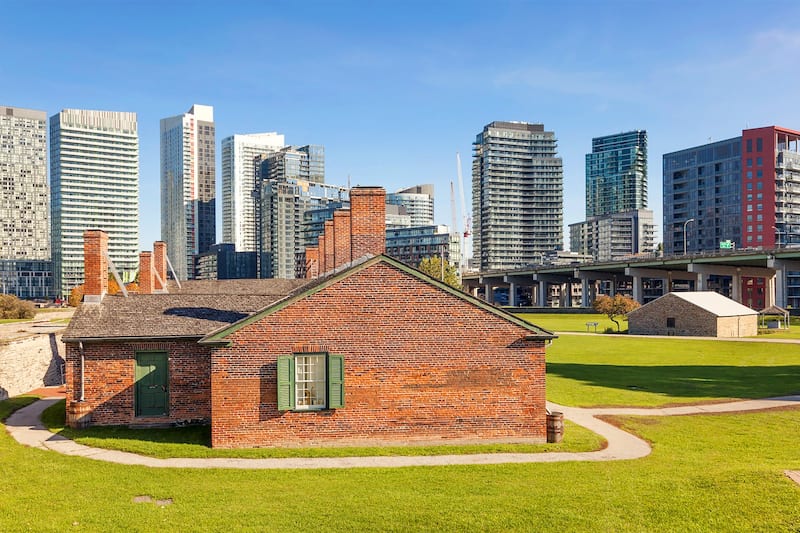Discover the Rich Background of Fort York National Historic Site
Discover the Rich Background of Fort York National Historic Site
Blog Article
Immerse Yourself in the Stories of Ft York National Historic Website at the Museum
At Ft York National Historic Website, the echoes of background resound through the wall surfaces of the gallery, providing a glance into the past that formed the present. The stories of military approaches, private perspectives, and the continuous conservation efforts produce a tapestry of interconnected stories that paint a dazzling photo of Ft York's rich heritage.
Background of Ft York's Construction
The building and construction of Ft York, a crucial armed forces garrison, commenced in the year 1793 under the instructions of John Graves Simcoe, the Lieutenant Governor of Upper Canada. Situated at the entrance of the Toronto Harbour, the ft was strategically positioned to safeguard the town of York against prospective American threats complying with the American Revolutionary War.

Regardless of facing difficulties such as harsh climate condition and limited resources, the building and construction of Fort York was completed in 1797. Throughout the years, the fort played a vital duty fit the history of Toronto and Canada, standing as an icon of armed forces stamina and perseverance. Today, Fort York stands as a National Historic Website, protecting the legacy of its construction and the tales of those who defended it.
Life in the Fort
Within the rock walls of Fort York National Historic Website, everyday regimens and obligations formed the lives of the garrison occupants. Soldiers posted at Fort York were charged with different obligations vital for the performance of the fort (Fort York National Historic Site Images).
In spite of the structured nature of life within the ft, there were also minutes of camaraderie and recreation. Soldiers engaged in tasks such as card games, narration, and periodic events to damage the dullness of armed forces life. Generally, life in the fort at Fort York was a mix of self-control, duty, and quick moments of respite among the demands of armed forces solution.
Military Methods and Defenses
Among the everyday regimens and self-displined life of the garrison occupants at Ft York National Historic Site, calculated military planning and defense reaction played a critical role in guarding the fort and its owners. The fort's military methods were thoroughly crafted to withstand possible assaults and protect the safety of those within its walls. Among the vital defense reaction used at Fort York was the layout of the fort itself. Tactically placed along the coastline of Lake Ontario, the ft used its location to control access points and screen approaching dangers.
Furthermore, Fort York's defenses included a system of earthworks, palisades, and purposefully positioned cannons to discourage adversary pressures. By fortifying the boundary and strategically pointing weapons, the fort might properly resist prospective invasions. The military employees posted at Fort York went through rigorous training to guarantee they were prepared to implement defensive techniques efficiently.
Noncombatant Viewpoints and Contributions
In the historic context of Fort York National Historic Site, private citizens played an essential function through their unique point of views and valuable payments to the fort's operations. While soldiers concentrated on protection and military approaches, private citizens living within or near Fort York brought varied skills and expertise that were important for the fort's functioning.

Legacy and Preservation Efforts
Civilians' substantial payments to Fort York National Historic Site have actually left a long-term heritage that remains to be protected via dedicated initiatives and initiatives. The heritage of Fort York is upheld through precise conservation strategies focused on conserving the site's historic importance for future generations. Conservation efforts consist of recurring maintenance of the ft's structures, repair jobs to ensure historical precision, and curricula that promote the site's heritage.
To protect the heritage of Fort York, preservationists collaborate with historians, archaeologists, and conservation experts. These partnerships assist in the implementation of finest techniques in heritage conservation, making sure that the site's honesty and credibility are maintained. In addition, fundraising projects and area involvement campaigns play an essential role in supporting preservation undertakings at Fort York.

Conclusion
To conclude, Fort York National Historic Website provides a rich tapestry of stories spanning from its construction to its legacy. Fort York National Historic Site. The background of the garrison, army techniques, private perspectives, and conservation efforts display the importance of this website in Canadian background. Visitors can immerse themselves in the past through interactive experiences and different exhibitions, obtaining a much deeper understanding of individuals and occasions that formed Fort York
Soldiers based at Fort York were tasked with various obligations crucial for the performance of the fort.Amidst the day-to-day routines and regimented life of the fort citizens at Fort York National Historic Website, calculated military preparation and protection systems played a critical duty in protecting the fort and its occupants. One of the crucial protection devices used at Ft York was the design of the fort itself.In the historic context of Ft York National Historic Website, civilians played a crucial function with their useful payments and unique perspectives to the fort's procedures. While soldiers focused on protection and military approaches, civilians living within or near Ft York brought varied abilities and expertise that were crucial for the ft's functioning.
Please visit one of our local supporters - Profix Macbook Repair In Toronto
Report this page